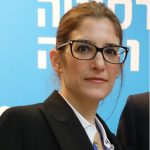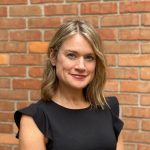DiSS
Discourse Markers as markers of (dis)fluency: The role of peripheral position – Liesbeth Degand
Studies on the relationship between discourse markers (DMs) and (dis)fluency have a Janus-headed face. On the one hand, DMs are described as structuring devices key to the local and global organization of discourse. As such, they contribute to its overall fluency. On the other hand, they have been described as traces of impediments in the speech production process, thus signalling disfluency. In other words, DMs are characterized by “functional ambivalence”, a notion reflecting their effects as symptoms of production difficulties and as signals of inferences to be made (Crible, 2018, p.3, see also Clark & Fox Tree, 2002).
Starting point of this presentation is the observation that DMs occur overwhelmingly in initial position of their host unit, where they fulfil specific discourse functions. Discourse Markers may also occur in a functionally-motivated way in final position, be it less frequently. The simplified hypothesis of this study is that DMs in peripheral position have a fluent signalling function, while DMs in non-peripheral position are symptomatic of disfluent use. We will show that this dichotomy needs to be fine-tuned considering the type of host unit under study. On the basis of previous work investigating the relationship between DM function, DM position and the linguistic type of host unit (syntactic clause, intonation unit or speech turn) (Degand & Crible, in press), the hypothesis is that DMs work as functional boundary markers at the syntactic (clause) and the interactional (turn) levels, but not at the prosodic (intonation unit) level. Other (medial) uses should be less functionally motivated and be considered as symptoms of disfluency. Fluent and disfluent use will be evaluated in context, considering co-occurrence with other disfluency markers (Crible, Degand & Gilquin, 2017).
A systematic study of the functional distribution of DMs in spoken French will show that this hypothesis is at least partially borne out.
 Liesbeth Degand is a professor of General and Dutch linguistics at the University of Louvain (UCLouvain, Belgium). She holds her PhD from the same university (1997). She lead and participated in several international and national research projects in the area of spoken and written discourse structure, grammaticalization and intersubjectification, discourse annotation, fluency and disfluency markers. She was the chair of the European COST network TextLink (2014-2018), aiming at bringing together functional-cognitive and computational work on the annotation of discourse relational devices in more than 20 different languages. She is currently involved as a working group leader in the European ITN project « Communicating Brains » on prediction and alignment in interactive discourse and in a national project on insubordination, coordination and subordination. Her publications reflect her research interests directed towards discourse annotation, spoken discourse segmentation, the semantics and pragmatics of discourse markers, and contrastive (corpus) linguistics, with a focus on the interface between discourse and grammar.
Liesbeth Degand is a professor of General and Dutch linguistics at the University of Louvain (UCLouvain, Belgium). She holds her PhD from the same university (1997). She lead and participated in several international and national research projects in the area of spoken and written discourse structure, grammaticalization and intersubjectification, discourse annotation, fluency and disfluency markers. She was the chair of the European COST network TextLink (2014-2018), aiming at bringing together functional-cognitive and computational work on the annotation of discourse relational devices in more than 20 different languages. She is currently involved as a working group leader in the European ITN project « Communicating Brains » on prediction and alignment in interactive discourse and in a national project on insubordination, coordination and subordination. Her publications reflect her research interests directed towards discourse annotation, spoken discourse segmentation, the semantics and pragmatics of discourse markers, and contrastive (corpus) linguistics, with a focus on the interface between discourse and grammar.
DiSStory: A computational Analysis of 9 editions of Disfluency in Spontaneous Speech workshop – Vered Silber Varod
What are the most prominent research topics during the past nine DISS workshop? Do we see any shift over the years? Can we identify the specific terms used in the research of disfluency? At the 10th workshop of DiSS, I will present some answers I have come up with using a data-driven approach on the database of abstracts published in the proceedings of DiSS workshops from 1999 to 2019. In this talk I call the participant to « Trust the text », as Sinclair (2004) entitled his book, and to join the journey into the DiSS story.
 Dr. Vered Silber-Varod is the director of the Open Media and Information Lab (OMILab) at the Open University of Israel. She is an expert is speech prosody and studied various aspect in the field for over 15 years. Her disfluency research is rooted in her PhD dissertation which was focused on prosodic junctures in spontaneous Hebrew and their syntactic interface. As a linguist, her studies are concerned with the phonological, phonetic, and socio-linguistic aspects of filled pauses, prolongations, and silent pauses. Her recent (dis)fluency related work includes studies of the acoustic-prosodic aspect of dialogues.
Dr. Vered Silber-Varod is the director of the Open Media and Information Lab (OMILab) at the Open University of Israel. She is an expert is speech prosody and studied various aspect in the field for over 15 years. Her disfluency research is rooted in her PhD dissertation which was focused on prosodic junctures in spontaneous Hebrew and their syntactic interface. As a linguist, her studies are concerned with the phonological, phonetic, and socio-linguistic aspects of filled pauses, prolongations, and silent pauses. Her recent (dis)fluency related work includes studies of the acoustic-prosodic aspect of dialogues.
Special Day
Disfluency characteristics predict stuttering persistency in preschool-aged children – Bridget Walsh
Preschoolers produce developmentally appropriate disfluencies as a natural part of language/speech acquisition. These disfluencies include revisions, multisyllabic word and phrase repetitions, hesitation/pauses, and interjections. On the other hand, stuttering-like disfluencies such as sound or syllable repetitions, prolongations, or blocks occur less commonly in typical speakers and serve as a reliable diagnostic marker of stuttering in preschoolers. I research the development of stuttering in young children with the goal of understanding why many children’s stuttering resolves, while other children persist and develop a chronic condition with the potential for lifelong negative consequences. In this presentation, I will discuss how stuttering characteristics—the type and frequency of stuttering-like disfluencies—may be used in predictive models to help identify preschoolers at greater risk for stuttering persistency.
 Dr. Bridget Walsh is a licensed speech-language pathologist and Assistant Professor at Michigan State University who researches the behavioral and physiological bases of childhood stuttering. With support from the National Institute on Deafness and other Communication Disorders at the National Institutes of Health, she is conducting a longitudinal study that examines the development of stuttering in preschool children. In her research, Dr. Walsh uses a comprehensive, multilevel approach to map the development of neurological, behavioral, and experiential factors to learn how these factors unfold over time and contribute to different stuttering outcomes in individual children—persistence or recovery.
Dr. Bridget Walsh is a licensed speech-language pathologist and Assistant Professor at Michigan State University who researches the behavioral and physiological bases of childhood stuttering. With support from the National Institute on Deafness and other Communication Disorders at the National Institutes of Health, she is conducting a longitudinal study that examines the development of stuttering in preschool children. In her research, Dr. Walsh uses a comprehensive, multilevel approach to map the development of neurological, behavioral, and experiential factors to learn how these factors unfold over time and contribute to different stuttering outcomes in individual children—persistence or recovery.
